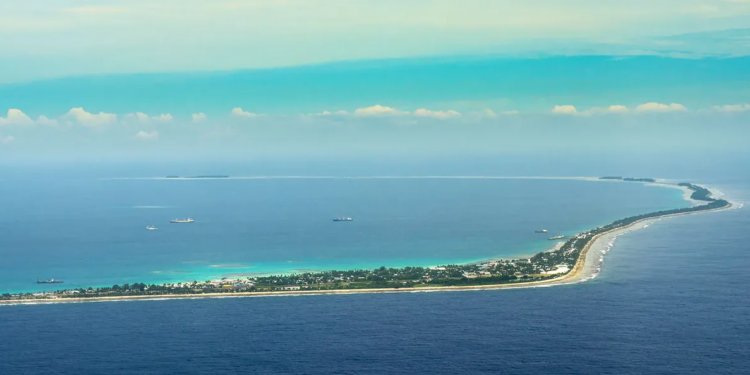by Chris Morrison, Daily Sceptic:

The scientists said their data suggested that sea-level rise has not been a widespread cause of erosion for island shorelines in the studied regions. “Presently, it is considered one of the contributing factors to shoreline erosion but not the predominant one,” they explained. Needless to say, none of this will detain the attention of climate hysterics in both mainstream media and politics. The Guardian was in fine form last June stating that rising oceans will extinguish more than land. “It will kill entire languages,” it added, noting the effect on Pacific islands such as Tuvalu. Those areas of the Earth that were most hospitable to people and languages are now becoming the “least hospitable”.
Silly emotional Guardianista guff of course, but happily it does not seem to apply to Tuvalu. A recent study found that the 101 islands of Tuvalu had grown in land mass by 2.9%. The scientists observed that despite rising sea levels, many shorelines in Tuvalu and neighbouring Pacific atolls have maintained relative stability, “without significant alteration”. A comprehensive re-examination of data on 30 Pacific and Indian Ocean atolls with 709 islands found that none of them had lost any land. Furthermore, the scientists added, there are data that indicate 47 reef islands expanded in size or remained stable over the last 50 years, “despite experiencing a rate of sea-level rise that exceeds the global average”.
The Maldives is also a poster scare for rising sea levels, with the attention-seeking activist Mark Lynas – he of the nonsense claim that 99.9% of scientists agree humans cause all or most climate change – organising an underwater Cabinet meeting of the local Government in 2009. As it happens, the Maldives is one of a number of areas that have seen recent increases in land mass. Other areas include the Indonesian Archipelago, islands along the Indochinese Peninsula coast, and islands in the Red and Mediterranean Seas. Notably, the coastal waters of the Indochinese Peninsula had the most substantial gain, with an increase of 106.28 km2 over the 30-year period. Of the 13,000 islands examined, the researchers found that only around 12% had experienced a significant shoreline shift, with almost equal numbers experiencing either landward (loss) or seaward (gain) movement.
The scientists identify many reasons why islands can grow in size despite the small annual rises in sea level seen in many parts of the world. It is noted that island shorelines are constantly changing due to factors such tides, winds, nearshore hydrodynamics and the transport of sediment. On inhabited islands, human action such as fish farming and land reclamation can be important.
Of course, humans action can have a number of unintended consequences, notably the mining of coral and the breakdown of natural water barriers. Island states such as the Maldives have not been slow in coming forward to claim ‘climate reparations’ from guilt-tripped citizens in the developed world. But tourism has dramatically boosted income in the Maldives to first world levels at a time when the locals have mined coral in industrial quantities to build ports, airports and resort developments. In the process, ocean life diversity has been lost and the islands are often less protected from storm waves that can flow direct to the shoreline. In a recent essay, a group of scientists and economists charged that coral mining “has resulted in massive degradation of shallow reef-flat areas, with important negative impacts on coastal protection”.
An amount of land equivalent to the Isle of Wight has been added to the shorelines of 13,000 islands around the world in just the last 20 years. This fascinating fact of a 369.67 square kilometre increase has recently been discovered by a group of Chinese scientists analysing both surface and satellite records. Overall, land was lost during the 1990s, but the scientists found that in the study period of three decades to 2020 there was a net increase of 157.21 km2. The study observed considerable natural variation in both erosion and accretion. Of course, the findings blow holes in the poster scare run by alarmists suggesting that rising sea levels caused by humans using hydrocarbons will condemn many islands to disappear shortly beneath rising sea levels. By means of such flimsy scare tactics, as we have seen in many other cases, desperate attempts are made to terrify global populations to accept the insanity of the Net Zero collectivisation.



